Red Russian kale, with its frilly green leaves and purple-red stems, is not only a visually stunning addition to your garden but also a nutritious and delicious vegetable to grow. Whether you’re a seasoned gardener or a beginner, this variety is easy to cultivate and offers a range of health benefits. From planting the seeds to harvesting the leaves, I’ll guide you through the process of growing Red Russian kale successfully.
Key Takeaways:
- Red Russian kale is a sweet and tender variety with frilly green leaves and purple-red stems.
- Growing Red Russian kale requires planting in full sun, regular watering, and starting seeds indoors or direct-seeding outdoors.
- This variety is rich in vitamins A and C, antioxidants, and protein, offering numerous health benefits.
- Red Russian kale can be used in various dishes, such as salads, sautés, soups, and pesto.
- Store harvested kale properly to maintain freshness and consider freezing for future use.
Health Benefits and Nutritional Value of Red Russian Kale
Red Russian kale is not only delicious but also packed with essential nutrients that offer numerous health benefits. Incorporating this vibrant leafy green into your meals can provide a significant boost to your overall well-being.
One of the significant advantages of Red Russian kale is its low-calorie content, making it an excellent choice for those watching their weight. Additionally, it is low in carbs and fat, further contributing to its nutritional value.
This variety of kale is rich in vitamins A and C, essential nutrients that support various bodily functions. Vitamin A promotes healthy eyesight and helps maintain optimal vision, while vitamin C boosts the immune system and aids in collagen production, contributing to healthier skin and connective tissues.
Furthermore, Red Russian kale is rich in antioxidants, compounds that fight against harmful free radicals in the body. Antioxidants are known for their potential to reduce the risk of chronic diseases, such as cancer, by preventing cell damage.
Red Russian kale is also an excellent source of protein, which is essential for tissue repair and growth. Adding this leafy green to your meals can help meet your protein needs, especially for those following a plant-based diet.
Regular consumption of Red Russian kale can offer various health benefits, including:
- Promoting eye health
- Reducing the risk of cancer
- Supporting a healthy immune system
- Aiding in weight management
- Providing essential vitamins and antioxidants
So, make sure to include Red Russian kale in your diet regularly to reap these amazing health benefits and nourish your body.
Red Russian Kale Nutritional Facts:
| Nutrient | Amount per 1 cup (chopped) |
|---|---|
| Calories | 33 |
| Carbohydrates | 7 grams |
| Protein | 3 grams |
| Fat | 0 grams |
| Vitamin A | 206% of the Daily Value (DV) |
| Vitamin C | 134% of the DV |
| Calcium | 10% of the DV |
| Iron | 5% of the DV |
Planting Red Russian Kale
When it comes to growing Red Russian kale, proper planting techniques are essential for a successful harvest. Whether you’re a seasoned gardener or a beginner, here are some tips to help you get started with planting Red Russian kale:
Preparing the Soil
Before planting your Red Russian kale seeds, it’s important to prepare the soil. This will provide your plants with the necessary nutrients for healthy growth. Start by adding fertilizer or compost to enrich the soil’s fertility.
Planting the Seeds
Red Russian kale seeds should be planted from early spring to early summer, depending on your location. To plant the seeds, make small furrows in the soil at a depth of 1/4 to 1/2 inch. Place the seeds in the furrows, leaving a space of 8 to 12 inches between each seedling.
Thinning the Seedlings
Once the Red Russian kale seedlings have sprouted, they will need enough space to grow and develop. Thin out the seedlings by removing the weaker ones, leaving only the strongest plants. This will allow the remaining seedlings to have ample room for their roots to spread and ensure healthier growth.
Watering and Mulching
Red Russian kale requires regular watering to maintain optimal moisture levels in the soil. Be sure to water the plants consistently, keeping the soil evenly moist. Additionally, mulching around the base of the plants can help retain moisture, suppress weed growth, and regulate soil temperature.
Cool-Season Crop
Red Russian kale is a cool-season green that thrives in cooler temperatures. It can tolerate early fall frosts, making it suitable for growing in a variety of regions. Planting this variety in the spring or fall will yield the best results.
By following these planting guidelines, you’ll be on your way to cultivating a successful crop of Red Russian kale. Stay tuned for the next section, where we’ll discuss common pests and problems that may arise when growing this nutritious green!
Common Pests and Problems with Red Russian Kale
When growing Red Russian kale, it’s important to be aware of common pests and problems that can affect its health. Here are a few issues to watch out for:
Aphids
Aphids are tiny insects that can infest Red Russian kale plants, sucking sap from the leaves and causing them to wilt. To manage aphid infestations, consider using natural insecticides or introducing beneficial insects, such as ladybugs, which feed on aphids.
Cabbage Worms
Cabbage worms are the larval stage of white butterflies and can cause significant damage to Red Russian kale leaves. These pests can be controlled by manually removing them from the plants or using organic insecticides labeled for caterpillar control.
Flea Beetles
Flea beetles are small, jumping insects that feed on Red Russian kale leaves, resulting in tiny holes and a stippled appearance. To manage flea beetle populations, you can use floating row covers and apply diatomaceous earth around the base of the plants as a natural deterrent.
Wilting Leaves and Thinning Foliage
Wilting leaves and thinning foliage in Red Russian kale can be signs of various issues, including nutrient deficiencies or overwatering. It’s essential to monitor your plants closely and address any specific problems promptly to ensure their overall health and productivity.
To keep your Red Russian kale plants healthy, remember to regularly inspect them for signs of pests and promptly address any issues that arise. With proper management, you can enjoy a thriving crop of this delicious and nutritious leafy green.
Harvesting and Storing Red Russian Kale
When it comes to enjoying the bountiful harvest of your Red Russian kale, knowing the proper techniques for harvesting and storing is essential. Here’s a guide on how to harvest and store Red Russian kale to ensure maximum freshness and flavor.
Harvesting Red Russian Kale
Harvesting Red Russian kale is a simple process that can be done once the leaves have reached the size of your hand. To harvest, follow these steps:
- Choose the outer leaves that are mature and vibrant in color.
- Using a sharp pair of scissors or garden shears, snip the leaves close to the stem, leaving the center intact for continued growth.
- Alternatively, you can remove the entire plant by cutting it at the base if you prefer a large harvest.
Remember to remove the tough ribs from the leaves before cooking or eating raw, as they can be quite fibrous.
Storing Red Russian Kale
To maintain the freshness and nutritional value of Red Russian kale, proper storage is crucial. Follow these steps to store your harvested kale:
- Thoroughly wash the leaves under cold water to remove any dirt or debris.
- Gently pat the leaves dry or use a salad spinner to remove excess moisture.
- Place the kale in a plastic bag, such as a resealable storage bag or a produce bag.
- Seal the bag tightly, ensuring there are no air pockets.
- Store the bag of kale in the refrigerator’s crisper drawer or a cool part of the fridge.
Properly stored Red Russian kale can stay fresh in the refrigerator for up to one week. This allows you to enjoy the flavors and benefits of this nutritious green throughout the week.
Alternatively, if you have an abundance of Red Russian kale that you want to preserve for later use, freezing is an excellent option. Freezing the kale locks in its freshness and nutrients, allowing you to enjoy it in smoothies, soups, and more. For freezing, follow these steps:
- Blanch the kale leaves in boiling water for 2-3 minutes.
- Quickly transfer the blanched leaves to an ice bath to cool them down rapidly.
- Drain and pat the leaves dry.
- Place the kale in freezer-safe bags or containers.
- Label the bags with the date and store them in the freezer.
| Storage Method | Duration |
|---|---|
| Refrigeration | Up to 1 week |
| Freezing | Up to 6 months |
By harvesting and storing Red Russian kale correctly, you can ensure that this nutritious and versatile green remains fresh for extended periods, allowing you to savor its flavors and reap its health benefits whenever you please.
Cooking and Recipe Ideas for Red Russian Kale
Red Russian kale is a versatile leafy green that can be enjoyed in a variety of dishes. Whether you prefer it raw in salads or cooked in hearty meals, there are endless ways to incorporate this nutritious vegetable into your cooking repertoire.
Sautéed Red Russian Kale: One simple and delicious way to prepare Red Russian kale is by sautéing it with olive oil, onion, and garlic. Heat some olive oil in a pan over medium heat, add diced onion and minced garlic, and sauté until fragrant. Then, add torn Red Russian kale leaves and cook until wilted. Season with salt and pepper to taste, and serve as a tasty side dish or a nutritious addition to pasta or rice.
Kale Pasta: For a quick and satisfying meal, toss cooked pasta with sautéed Red Russian kale, cherry tomatoes, and grated Parmesan cheese. You can also add some pine nuts or walnuts for extra crunch. This dish is bursting with flavors and textures, making it a crowd-pleaser for both kids and adults.
Kale and White Bean Soup: Warm up on a chilly day with a comforting bowl of Kale and White Bean Soup. Sauté diced onions, carrots, and celery in a pot, then add vegetable broth, canned white beans, and chopped Red Russian kale. Simmer for about 20 minutes until the flavors meld together. Season with Italian herbs, salt, and pepper, and enjoy a hearty, nutrient-rich soup.
Kale Pesto: Put a twist on traditional pesto by using Red Russian kale instead of basil. In a food processor, combine kale leaves, garlic, pine nuts, Parmesan cheese, and olive oil. Blend until smooth and use the vibrant green pesto as a spread on sandwiches, toss it with your favorite pasta, or even as a flavorful topping for grilled meats or vegetables.
“The slightly sweet and tender texture of Red Russian kale makes it a versatile ingredient in many recipes.”
As you explore the culinary possibilities of Red Russian kale, don’t be afraid to get creative. Try adding it to stir-fries, omelets, smoothies, and even baked goods for an extra dose of nutrition. Let your taste buds be your guide and experiment with different flavor combinations to find your favorite way to enjoy this vibrant vegetable.
| Recipe | Ingredients | Instructions |
|---|---|---|
| Sautéed Red Russian Kale |
|
|
| Kale Pasta |
|
|
| Kale and White Bean Soup |
|
|
| Kale Pesto |
|
|
With these delicious recipe ideas, you can elevate your meals and discover the wonderful flavors of Red Russian kale. Get creative in the kitchen and enjoy the nutritional benefits of this vibrant leafy green.
Red Russian Kale History and Origin
Red Russian kale has a fascinating history that traces back to Siberia, where it was originally cultivated. In the late 1800s, this heirloom variety found its way to North America and quickly gained popularity among farmers and gardeners. Today, it remains a beloved and widely grown vegetable, known for its exceptional taste and unique visual appeal.
One of the remarkable characteristics of Red Russian kale is its striking transformation in cooler weather. The typical grey-green leaves take on a beautiful purple hue, adding a touch of color to gardens and landscapes. This feature makes Red Russian kale not only a flavorful culinary ingredient but also an ornamental plant that enhances the aesthetics of any garden.
The Heritage of Organic Red Russian Kale
As an heirloom variety, Red Russian kale is often grown organically, using natural and sustainable methods. Organic farming practices prioritize the use of compost, natural fertilizers, and environmentally friendly pest control methods to ensure healthy and chemical-free crops.
“Growing Red Russian kale organically not only benefits the environment but also results in a more wholesome and flavorful vegetable. By avoiding synthetic pesticides and fertilizers, organic farming helps maintain the natural balance of the ecosystem, producing nutritious and high-quality produce.”
By choosing organic Red Russian kale, you can support sustainable agriculture and enjoy the pure taste and nutritional benefits of this vibrant vegetable.
Preserving the Legacy of Heirloom Red Russian Kale
Heirloom varieties like Red Russian kale carry a rich heritage and have a unique genetic makeup that has been preserved for generations. These plants are open-pollinated and have not been hybridized or genetically modified, maintaining their original characteristics and flavors.
When you grow heirloom Red Russian kale, you become a custodian of its history, contributing to the preservation of biodiversity and sustaining culinary traditions. By saving and sharing seeds from heirloom plants, you can ensure the continuation of these remarkable varieties for future generations.
Whether you’re a history enthusiast, a food lover, or a passionate gardener, exploring the history and origin of Red Russian kale allows you to connect with the roots of this remarkable vegetable and appreciate its enduring beauty and flavor.
A Comparison of Red Russian Kale Varieties
| Variety | Flavor | Leaves | Stems |
|---|---|---|---|
| Red Russian | Mild and slightly sweet | Frilly and grey-green | Purple-red |
| White Russian | Mild and creamy | Smooth and green | White |
| Siberian | Tender and delicate | Smooth and green | Green with purple streaks |
Growing Conditions for Red Russian Kale
When it comes to growing Red Russian kale, providing the right conditions is essential. This versatile vegetable thrives in specific environments, allowing you to cultivate a robust and healthy crop. Here are the key factors to consider:
- Sunlight: Red Russian kale prefers full sun exposure, receiving at least six hours of direct sunlight each day. Placing your plants in a sunny location will promote optimal growth and development.
- Soil: Well-drained, light soil is ideal for Red Russian kale. The soil should be loose and rich in organic matter to ensure proper root development. Consider amending the soil with compost or aged manure to enhance its fertility.
- Heat and Cold Tolerance: One of the benefits of Red Russian kale is its ability to grow in various climates. This variety is relatively tolerant of both heat and cold, making it suitable for different regions.
- Organic Growing Methods: If you prefer a more sustainable approach, consider applying organic growing techniques to your Red Russian kale. This means avoiding synthetic pesticides, herbicides, and fertilizers and opting for natural alternatives instead.
| Growing Conditions | Requirements |
|---|---|
| Sunlight | Full sun (at least 6 hours per day) |
| Soil | Well-drained, light soil with organic matter |
| Heat and Cold Tolerance | Can tolerate both heat and cold |
| Organic Growing Methods | Avoid synthetic pesticides, herbicides, and fertilizers |
By providing the right growing conditions, you can ensure that your Red Russian kale thrives, producing a delightful harvest of tender and nutritious leaves.
Tips for Successful Red Russian Kale Growing
When it comes to growing Red Russian kale, there are a few key tips that can help ensure a successful harvest. Follow these guidelines to cultivate healthy and flavorful kale plants.
1. Provide Regular Water:
Red Russian kale requires consistent moisture to thrive. Keep the soil evenly moist by watering regularly, especially during dry periods. Avoid overwatering, as this can lead to root rot.
2. Mulch the Soil:
Applying a layer of organic mulch around the base of the plants helps conserve moisture, suppress weeds, and regulate soil temperature. Use straw, wood chips, or compost as mulch to improve growing conditions for your Red Russian kale.
3. Address Pests Promptly:
Monitor your kale plants regularly for pests such as aphids, cabbage worms, and flea beetles. If you spot any insects or signs of damage, take immediate action to control the infestation. Utilize organic pest control methods whenever possible to minimize the use of chemicals.
4. Harvest the Outer Leaves:
One of the great things about Red Russian kale is that you can harvest its leaves throughout the growing season. Start harvesting when the outer leaves reach a size suitable for consumption. By removing the outer leaves, you encourage new growth and a continuous supply of fresh kale.
5. Proper Storage Techniques:
To maintain the freshness and flavor of your harvested Red Russian kale, it’s important to store it correctly. Place the kale in a plastic bag and store it in the refrigerator. Alternatively, you can blanch and freeze the kale for longer-term storage.
6. Experiment with Cooking Methods and Recipes:
Red Russian kale is a versatile ingredient that can be enjoyed raw or cooked. Get creative in the kitchen by experimenting with various cooking methods and recipes. Sauté it with garlic and olive oil, add it to soups or stews, or use it as a topping for homemade pizza. The possibilities are endless!
“Growing Red Russian kale requires attention to watering, pest control, and harvesting techniques. By following these tips, you’ll be able to cultivate healthy kale plants and enjoy the bountiful harvest of this flavorful leafy green.”
| Tips for Growing Red Russian Kale | Description |
|---|---|
| Provide Regular Water | Ensure consistent moisture to promote healthy growth |
| Mulch the Soil | Use organic mulch to conserve moisture and suppress weeds |
| Address Pests Promptly | Monitor for pests and take immediate action to control infestations |
| Harvest the Outer Leaves | Continuously harvest outer leaves to promote new growth |
| Proper Storage Techniques | Store harvested kale properly to maintain freshness |
| Experiment with Cooking Methods and Recipes | Get creative in the kitchen with your Red Russian kale |
Red Russian Kale in Landscaping and Ornamental Gardens
If you’re looking to add a touch of beauty to your landscaping or ornamental garden, consider incorporating Red Russian kale. This variety of kale features frilly green leaves and vibrant purple-red stems, making it a visually stunning addition to any outdoor space.
Not only does Red Russian kale enhance the aesthetics of your garden, but it also offers culinary benefits. This versatile vegetable can be harvested and used in various delicious recipes, adding a nutritious and flavorful element to your meals.
Whether you’re growing an ornamental garden to showcase its vibrant colors or looking to harvest fresh kale for your culinary creations, Red Russian kale is a fantastic choice. Its attractive appearance and nutritional value make it an ideal addition to any garden.
Benefits of Red Russian Kale in Landscaping:
- Adds vibrant color and visual interest to your garden
- Creates a unique and eye-catching focal point
- Provides a contrast to other plants and flowers
- Thrives in various growing conditions
Culinary Uses of Red Russian Kale:
- Enjoy it raw in salads for a refreshing crunch
- Sauté the leaves with garlic and olive oil for a flavorful side dish
- Add it to soups and stews for an extra nutritional boost
- Create a delicious kale pesto for pasta dishes
With its ornamental appeal and culinary versatility, Red Russian kale is a fantastic choice for any garden enthusiast. Whether you’re a beginner gardener or have a green thumb, this variety will bring both beauty and flavor to your outdoor space.
Freezing Red Russian Kale for Future Use
Freezing is a convenient method for preserving Red Russian kale and keeping it fresh for future use. Whether you have an abundance of kale from your garden or want to stock up on this nutritious vegetable when it’s in season, freezing allows you to enjoy the benefits of Red Russian kale all year round.
Washing and Preparing Red Russian Kale for Freezing
Before freezing Red Russian kale, it’s crucial to wash and prepare the leaves properly to remove any dirt or debris. Follow these steps:
- Thoroughly wash the kale leaves under cool running water.
- Gently pat the leaves dry with a clean kitchen towel or use a salad spinner to remove excess moisture.
- Remove any tough stems by holding the base of the stem with one hand and sliding the other hand up the stem, stripping the leaves away.
- For convenience, you can choose to freeze the leaves whole or puree them for future use.
By freezing Red Russian kale, you can retain its nutritional value and vibrant color, ensuring a tasty addition to your favorite recipes even when the growing season is over.
Methods for Freezing Red Russian Kale
There are two main methods for freezing Red Russian kale: freezing whole leaves and pureeing.
| Method | Steps |
|---|---|
| Freezing Whole Leaves |
|
| Pureeing and Freezing |
|
Both methods are equally effective, so choose the one that suits your cooking preferences and convenience.
When using frozen Red Russian kale, it’s important to note that the texture may change slightly. While it may not be as crisp as fresh kale, it still retains its flavor and nutritional value. Frozen Red Russian kale works well in smoothies, soups, stews, and other cooked dishes where the texture is less noticeable.
Now that you know how to freeze Red Russian kale, you can preserve this nutritious vegetable for future use and enjoy its benefits long after the growing season ends.
Conclusion
After all the hard work and dedication, growing your own Red Russian kale can be a rewarding experience. This flavorful and nutritious leafy green offers a host of health benefits and adds a vibrant touch to any meal.
If you’re not up for the challenge of growing it yourself, don’t worry! You can easily buy Red Russian kale from various sources. Whether you prefer to shop at local farmer’s markets, organic grocery stores, or online vendors, there are plenty of options available to satisfy your cravings for this versatile vegetable.
So why wait? Whether you choose to grow it or buy it, don’t miss out on the opportunity to enjoy the tender texture and rich flavor of Red Russian kale. Incorporate it into your meals, experiment with different recipes, and indulge in the delightful taste and nutritional benefits it has to offer.

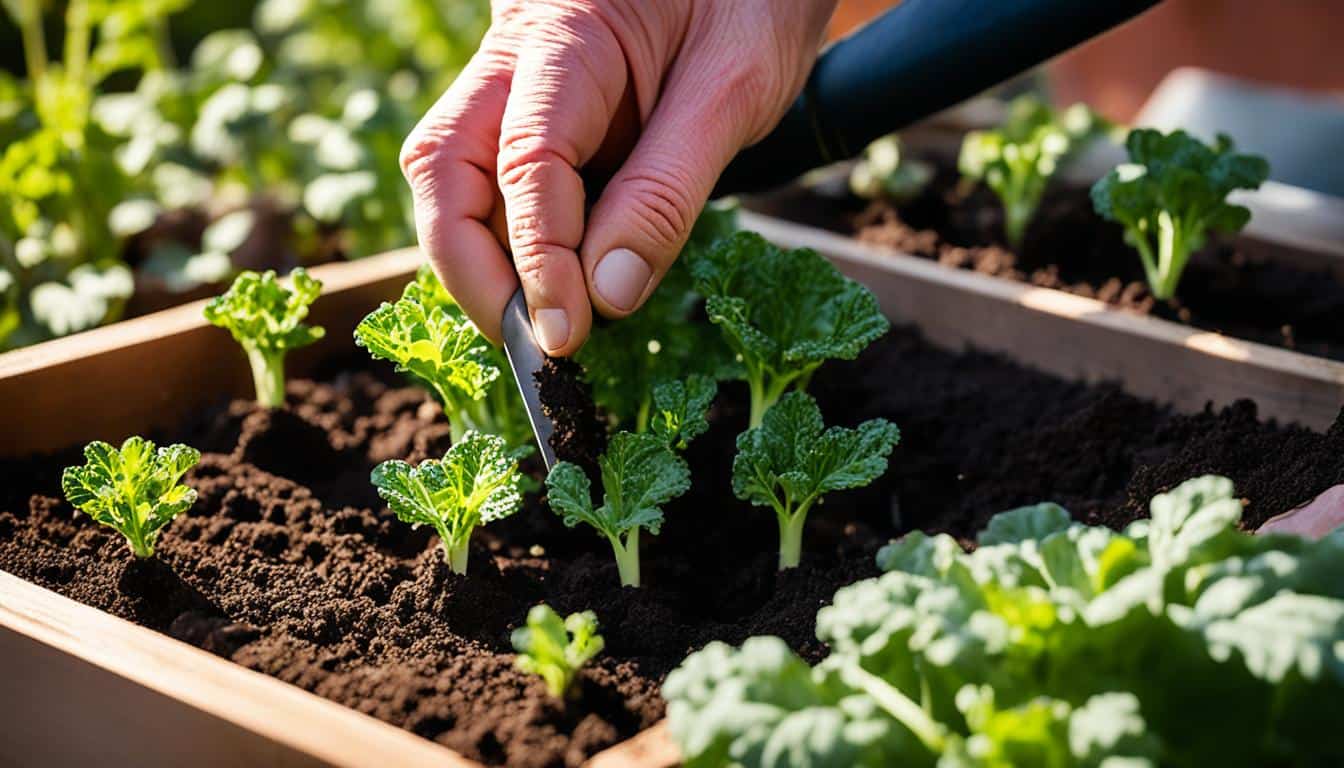

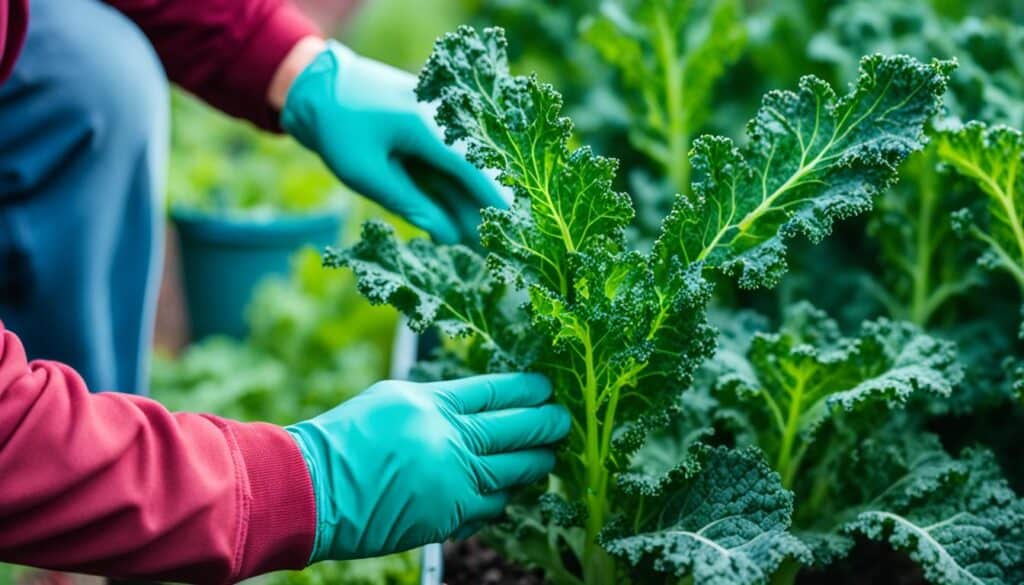
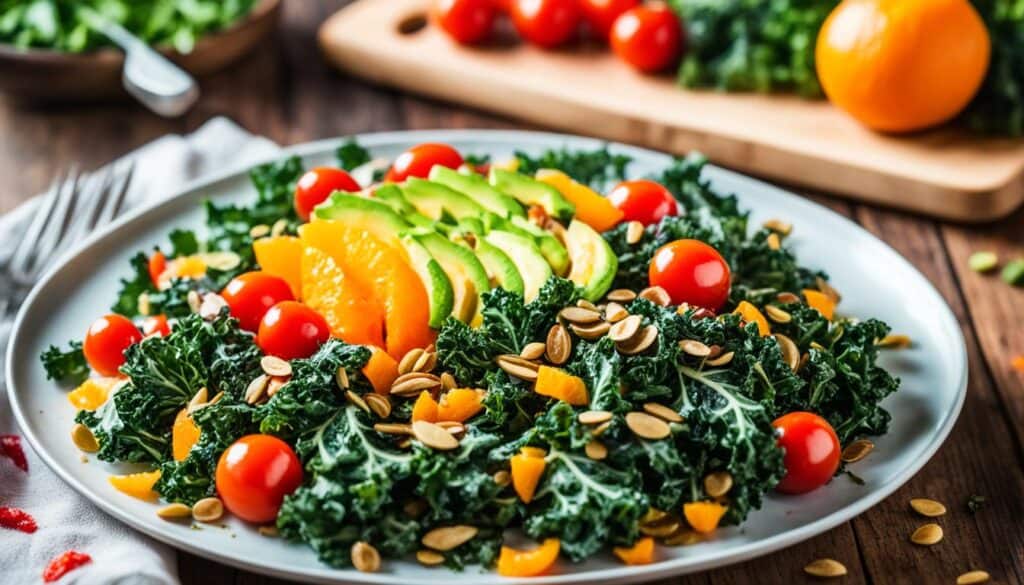
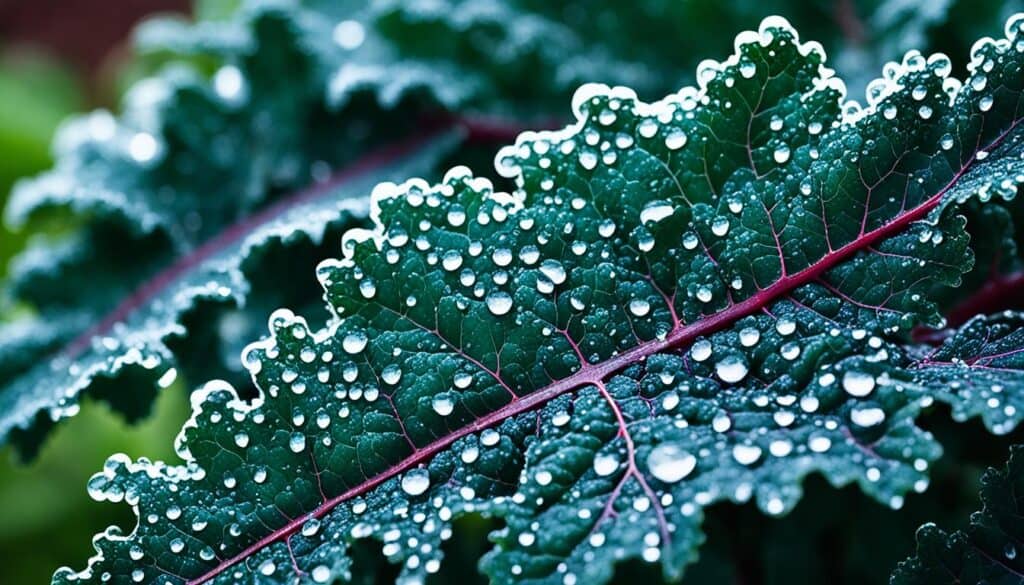
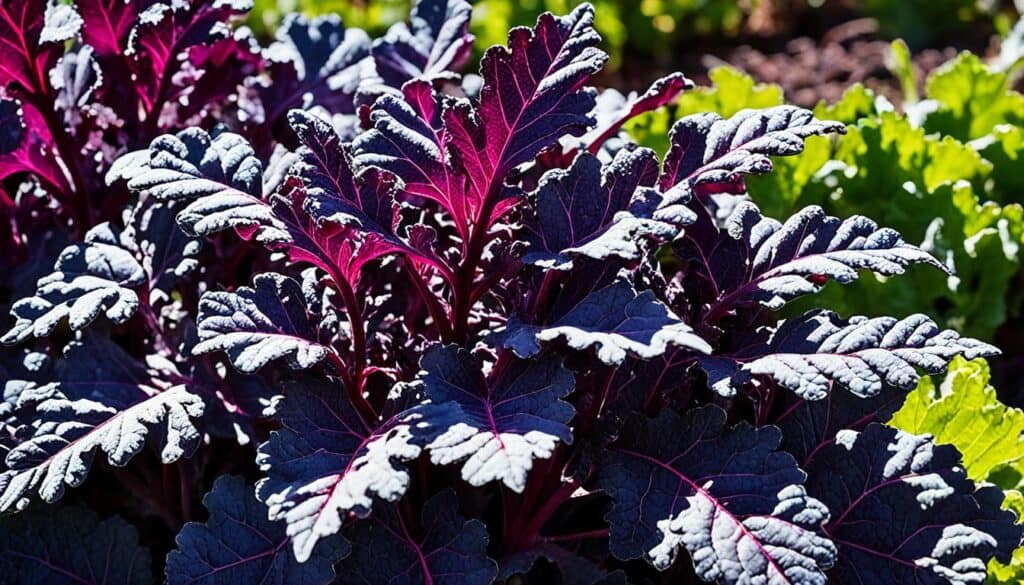



Leave a Reply